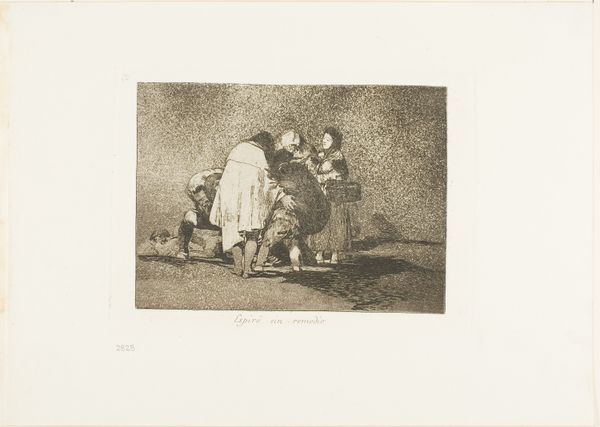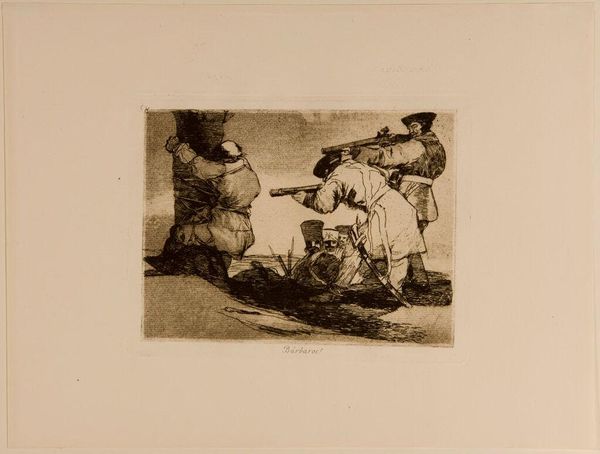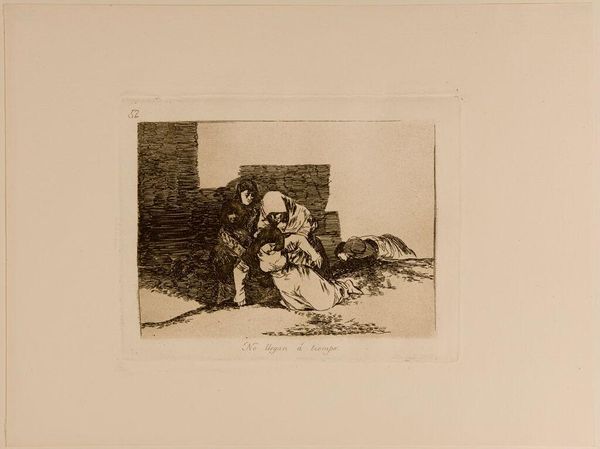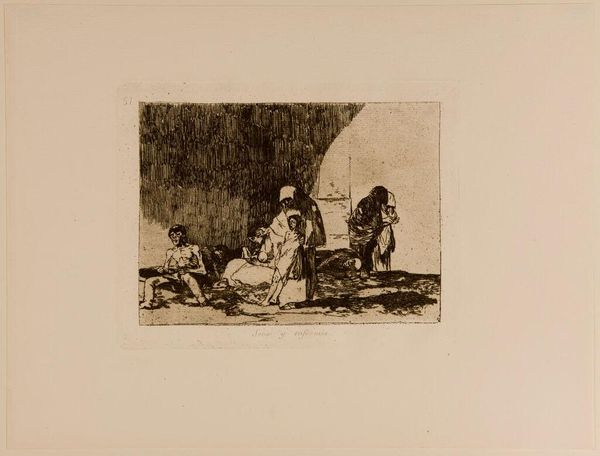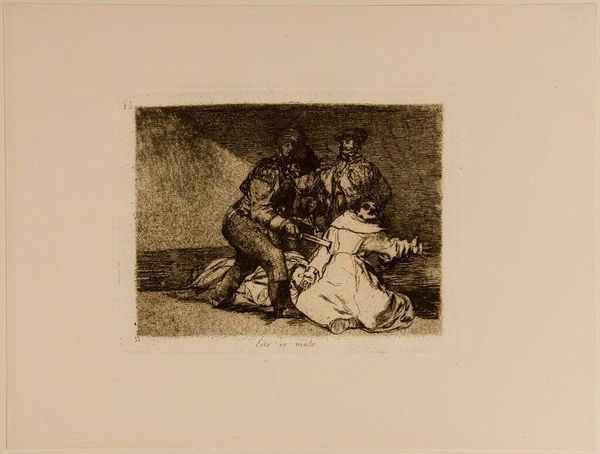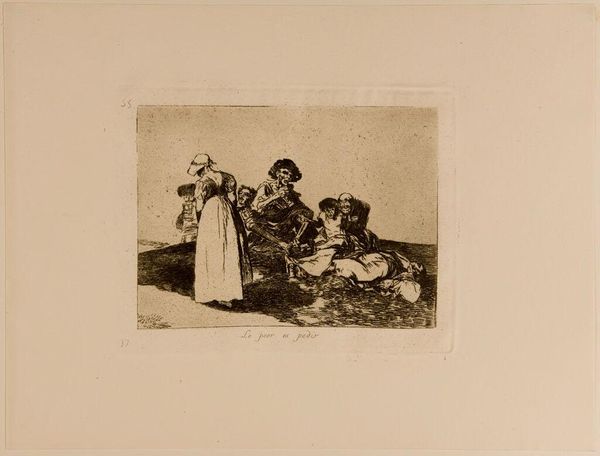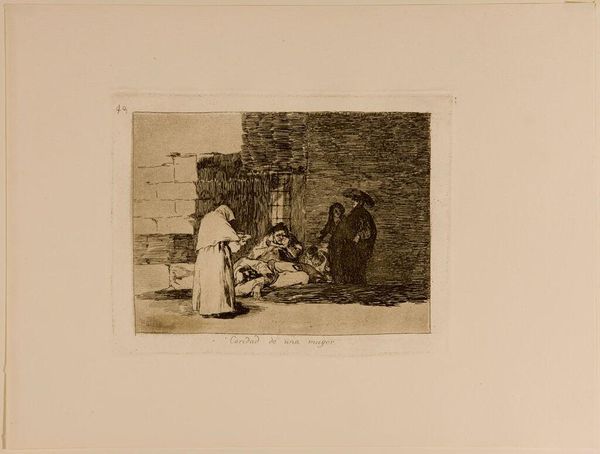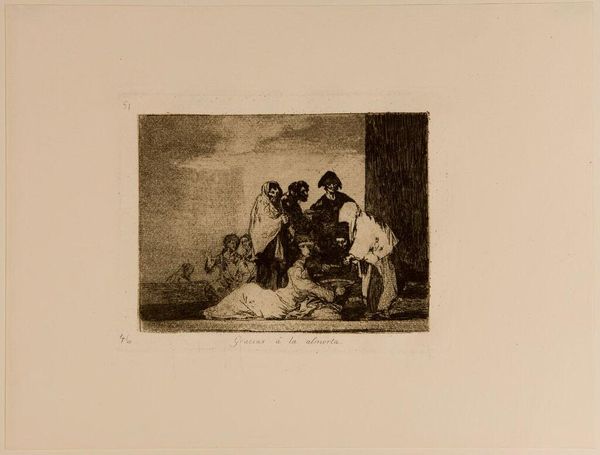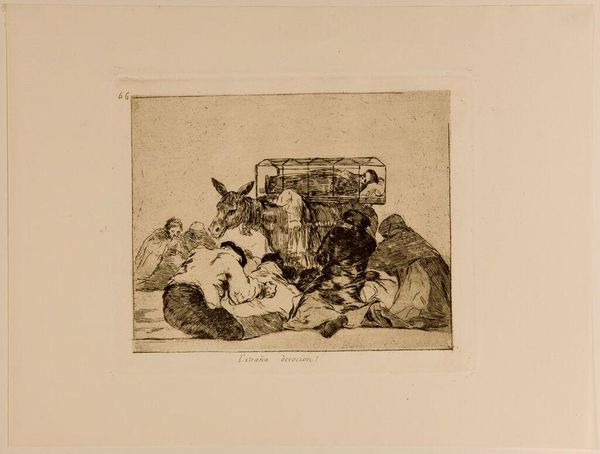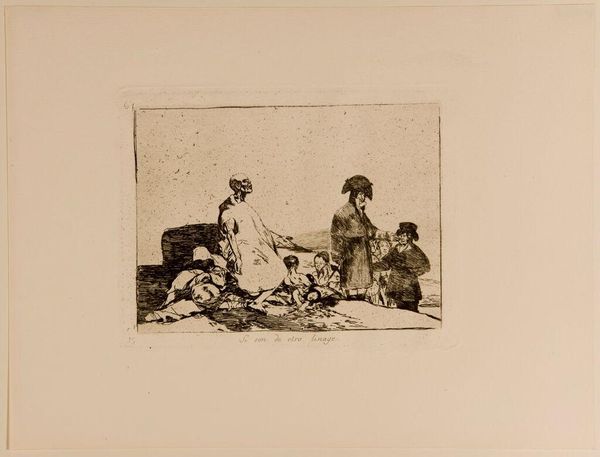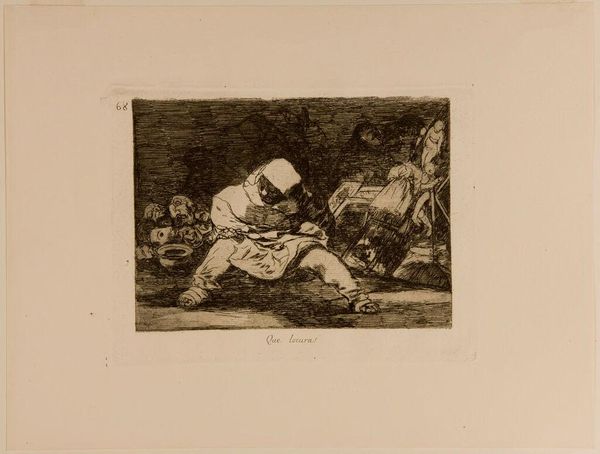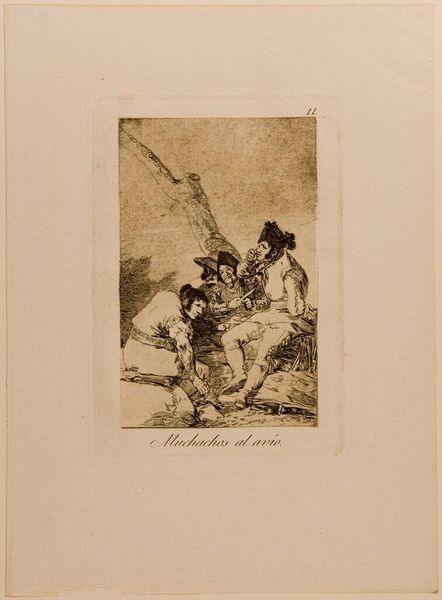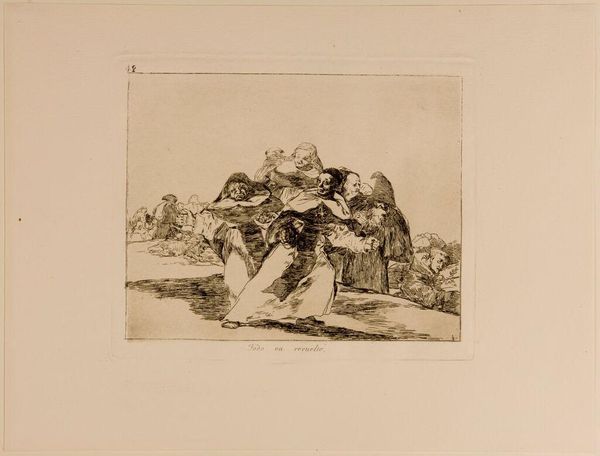
There Was Nothing To Be Done and He Died 18th-19th century
0:00
0:00
Copyright: CC0 1.0
Curator: This is Francisco Goya's print titled "There Was Nothing To Be Done and He Died." It belongs to his series, The Disasters of War. Editor: It feels like a punch to the gut. The bleakness is palpable, you can almost feel the weight of despair etched into the paper. Curator: Goya used etching and aquatint to create the stark contrasts, highlighting the brutality of conflict and its impact on ordinary people. He was really exploring the social impact. Editor: Absolutely. The composition places the viewer as a witness, forcing us to confront the human cost of violence, the complete breakdown of the social fabric. Curator: He challenges the traditional heroic narratives of war. Instead, we see only suffering, questioning power structures and class inequalities. Editor: It's a powerful indictment. Looking at it from today's perspective, it serves as a timeless reminder of the devastating consequences of war and those it leaves behind. Curator: I agree, its historical context combined with material elements allows it to have an extremely long life in the art world. Editor: It's a haunting reminder that certain cycles of violence seem destined to repeat themselves throughout history.
Comments
No comments
Be the first to comment and join the conversation on the ultimate creative platform.
